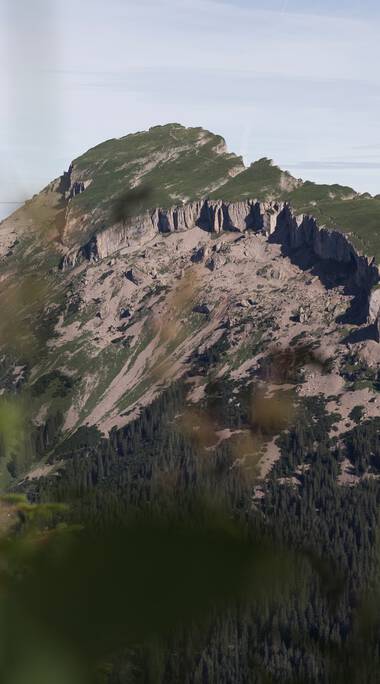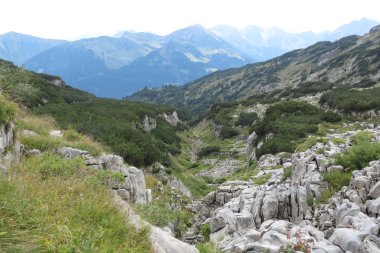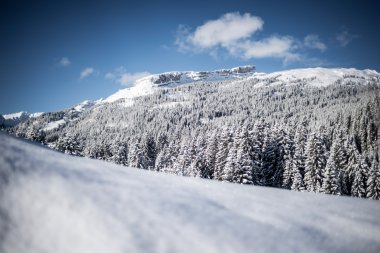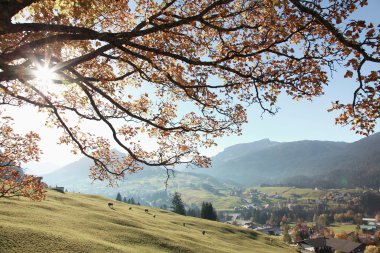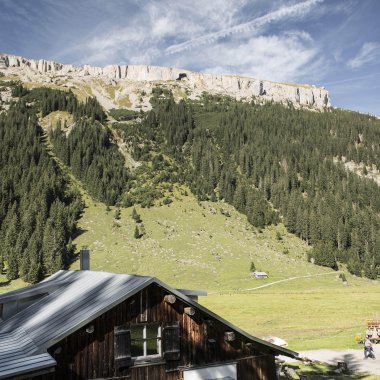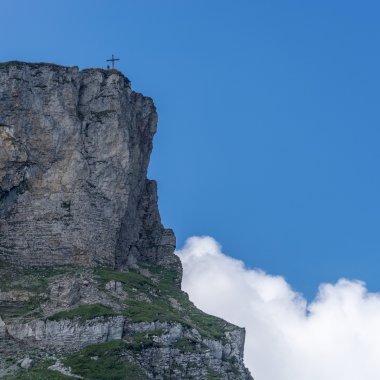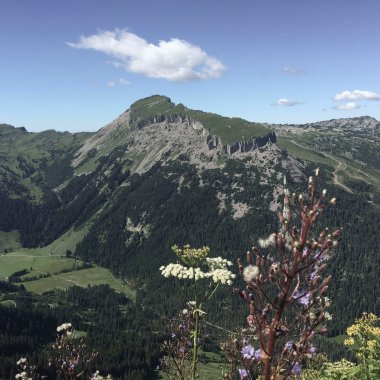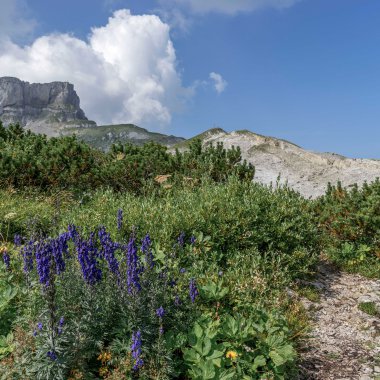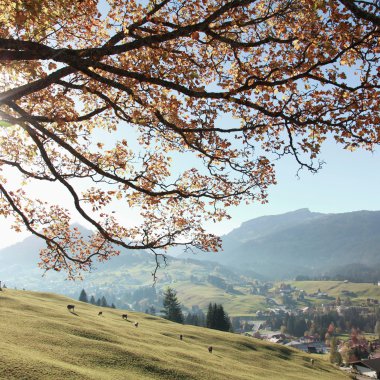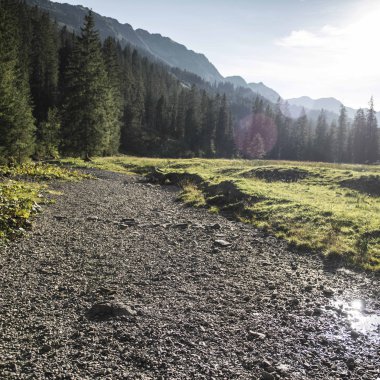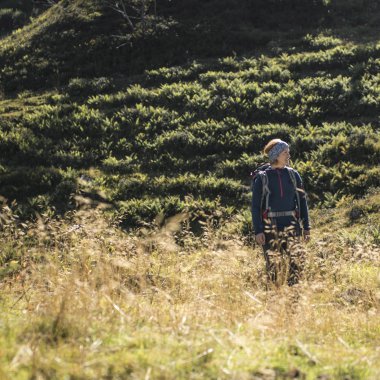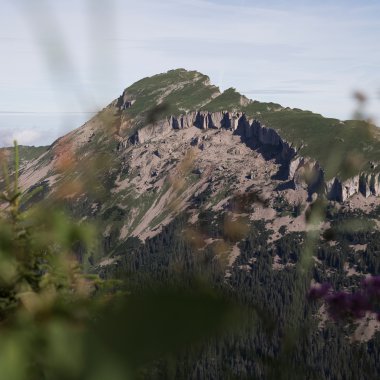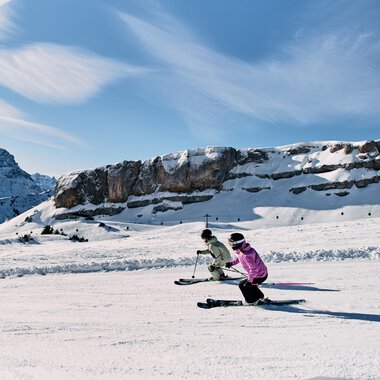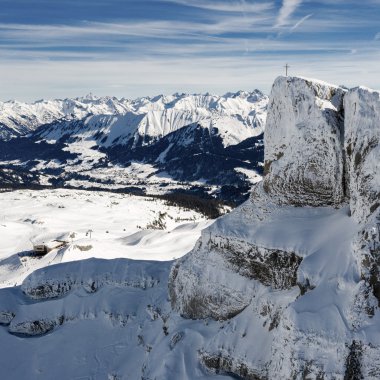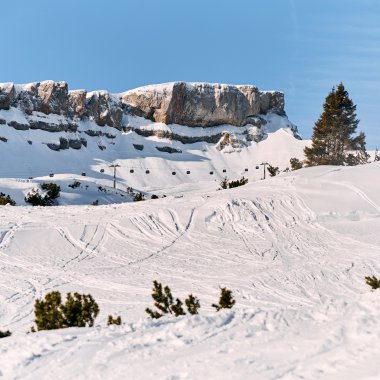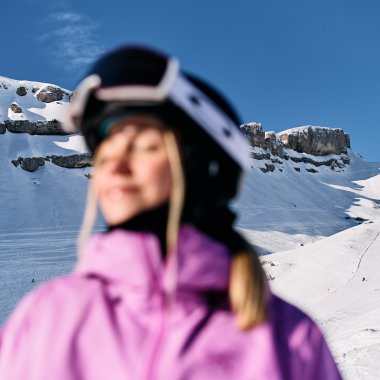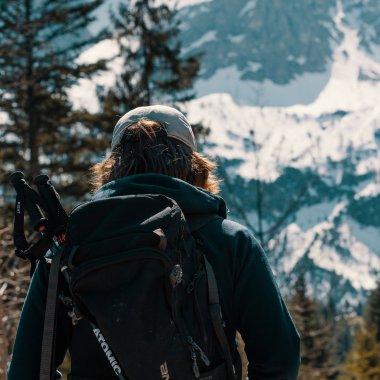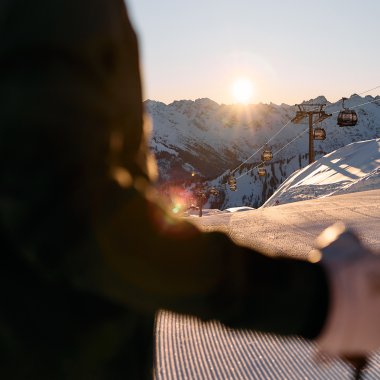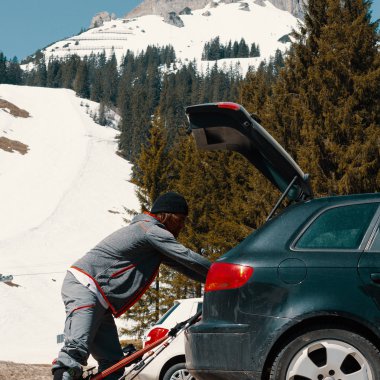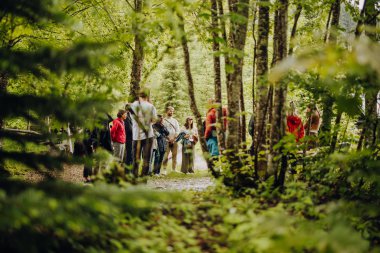Unique natural wonder The HOHE Ifen – a striking landmark
The Hohe Ifen must have immediately caught the eye of the first Valais farmers who crossed the Hochalp Pass into Kleinwalsertal centuries ago – a mountain that shapes the landscape like no other. A table mountain that can be seen from afar and attracts everyone's attention with its unique, flat summit shape. Next to it, like a carpet, is the bizarre and furrowed Gottesacker plateau. This special shape, the extraordinary vegetation and the ancient geology make the Hoher Ifen a unique natural wonder in the region. A mountain that tells stories that lie dormant in every crevice and crevasse.
The Hohe Ifen at a glance
The Hohe Ifen, with its 2,230 metres and characteristic table mountain shape, is the unmistakable landmark of the Kleinwalsertal – and not only that, it was the inspiration for the region's new logo.
The summit can be reached from two sides: The eastern route leads up from the Auenhütte via the Ifenhütte. The western route runs through the Schwarzwassertal valley via the Schwarzwasserhütte and the Aple Ifersgunt. In winter, the Schwarzwassertal is also popular with snowshoe hikers and ski tourers.
The Gottesacker plateau, a protected karst landscape, stretches to the north-east of the Ifen. The rugged rock labyrinth lies like a carpet at the foot of Table Mountain. The adjoining Hahnenköpfle is also very scenic.
The Ifenbahn cable car, whose origins date back to 1961, has been extensively modernized in recent years. Today, it also takes you comfortably up to the middle station at almost 1,600 metres in summer. In winter, 25 kilometres of varied slopes and lifts for beginners and advanced skiers await you. You can also get to the top in winter without skis: The winter hiking trail on the Gottesacker enchants with its snow dunes.
Find your new favourite tour! our hiking recommendations
1. natura 2000 - european protected area
The Hohe Ifen and the Gottesacker plateau are true natural jewels and part of the Europe-wide Natura 2000 network. This unique area spans around 5,000 hectares across the border between Germany and Austria. The landscape could not be more varied: On one side, the bizarre Gottesacker plateau with its rugged karst surfaces, where plants such as the rare Hungarian gentian thrive. On the other side is the Schwarzwassertal valley with its mysterious moors, which were formed at lower altitudes and tell us about the Ice Age. In between are alpine limestone grasslands, "primeval meadows" and montane spruce forests – all home to a diverse flora and fauna. These include golden eagles, capercaillies, adders and rare bats. The area has been protected as a plant reserve since 1964 and, thanks to the Natura 2000 program, remains a safe haven for all the fascinating species that live here.
2. Gottesackerplateau
The Gottesacker plateau may seem fascinating at first glance, but it is dry and inhospitable. A barren area, criss-crossed by cracks and crevices. But it is not as hostile as it first appears. Plants such as alpine rose, silverroot, juniper and spring gentian thrive in this bizarre landscape. A unique flora grows in the cracks and crevices, perfectly adapted to the harsh conditions. What would a place like this be without mystical legends surrounding its origins? In Kleinwalsertal, it is said that a beggar once asked for some lard on a rich alpine pasture. But the vessel he received was filled with dung. In revenge, God punished the dairyman and his family. The once fertile pasture turned into a stony plateau. Today, a hiking trail for experienced hikers leads through this fascinating landscape, which tells its very own story.
3. karst landscape
The Gottesacker plateau shows in an exciting way how water has reshaped the carbonate rock over thousands of years. The Schrattenkalk, a 100-metre-thick layer of limestone from the Cretaceous period, forms the basis of this unique landscape. Due to the constant influence of water, fantastic geological formations such as karren, sinkholes and caves have been and continue to be created here. And what happens to all the rainwater? It simply disappears into the ground and continues to flow underground – creating a huge system of tunnels and water channels. This phenomenon can be observed in the Schwarzwasserbach stream. It disappears into the limestone and suddenly reappears elsewhere. But it's not just fascinating for geologists! These underground caves also serve as a refuge for animals. Especially in winter, bats and birds use them as a refuge. A real natural wonder!
4. smart in nature
Are you planning a hike in the Ifen-Gottesacker European nature reserve? Then take these tips with you on your tour: stay on the marked paths to protect the sensitive flora. Leave plants and plant parts where they grow and enjoy them in their natural environment. With binoculars, you can observe the animals without disturbing them – so you can experience nature up close. Speaking of animals. You should keep your dog on a lead. It is best to take any waste with you. This also applies to fruit peelings and seeds. And did you know that drones are not allowed here as they can frighten animals? If you are thinking about spending a night in this special landscape: Bivouacking and camping are not permitted anywhere in the protected area. With these little tips, you can help to ensure that nature on the Ifen remains as beautiful as it is.
mindful in nature experience extraordinary moments
The Ifen-Gottesacker European nature reserve is a unique place to experience nature in a very mindful way. The extraordinary geology and diversity of the area provide the perfect backdrop for discovering flora and fauna in all their glory. Even a short break on one of the hiking trails can be a special moment. The "Experience nature consciously" initiative places particular emphasis on protecting this natural heritage and at the same time raising awareness of the importance of this landscape. On the hiking trails, you can not only marvel at the imposing Gottesackerwände, but also discover plants such as alpine roses and alpine calcareous grasslands. With a bit of luck, you might spot eagles or chamois in their natural habitat. Your stay in this karst landscape will be a lasting nature experience that not only heightens your senses, but also your understanding of the need to protect this region.
